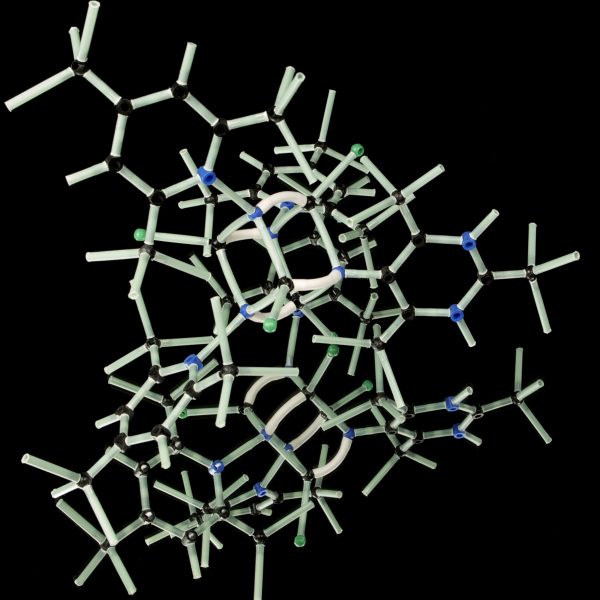Edward McCord on The Value of Species
In The Value of Species, Edward L. McCord both celebrates the immense breadth of life forms found on earth—from the rainforests and oceans to the prairies and deserts—and defends its value in the face of ever-more-urgent environment threats to biodiversity. Drawing on concepts from philosophy, law, and ethics in addition to biology, McCord argues that species are not valuable only insofar as they are useful to humans as food, companionship, or entertainment. Rather, he writes, they are of great intellectual import, for their fascinating individual features and distinct place in ecosystems and evolution have a great deal to teach us about life in the broadest sense.
Edward L. McCord—
We live on a planet defined by geographic features, and the life of the planet everywhere reflects the history of its surface. We understand much of this, such as the broad division of life forms marked by Wallace’s Line separating ancient Asia from Australasia. But there are also countless matters we do not understand. As a fan of carnivorous plants, I wonder how the famous Venus Flytrap came to live in only a small Atlantic coastal region near Wilmington, North Carolina, USA, or how the captivating pitcher plant Cephalotus follicularis came to live in only a small coastal region near Albany, Australia.
Every creature small and large is partly a story of this planet, and that is something wonderful about them. Consider a lucid example. The fastest land mammal in the Western Hemisphere is the elegant Antilocapra Americana, or “pronghorn,” as it is commonly known, a native of the American West where I run field courses. The pronghorn is often confused with the Old World “antelope,” but the two animals evolved on separate continents over tens of millions of years and are virtually unrelated. The speed of the pronghorn is a striking story to awaken why we should appreciate every species on earth. Yet the pronghorn also is a cautionary exhibit to understand how, to our diminishment, we can fail to spot this.
 Consider two kinds of facts about the pronghorn. On the one hand are the details we gain from observing the pronghorn, asking questions, and learning about it. What is “the pronghorn”? Among a myriad of features that we discover, we learn about its extraordinary swiftness. The pronghorn can sprint at sixty miles per hour. Imagine that! Only African cheetahs attain a faster pace, but even those modern cheetahs cannot sustain high speeds as long as a pronghorn can. The pronghorn can run at a very high velocity over many miles.
Consider two kinds of facts about the pronghorn. On the one hand are the details we gain from observing the pronghorn, asking questions, and learning about it. What is “the pronghorn”? Among a myriad of features that we discover, we learn about its extraordinary swiftness. The pronghorn can sprint at sixty miles per hour. Imagine that! Only African cheetahs attain a faster pace, but even those modern cheetahs cannot sustain high speeds as long as a pronghorn can. The pronghorn can run at a very high velocity over many miles.
The singular design of the pronghorn serves this amazing speed, with a huge heart, windpipe, and lungs, a large liver for quick glycogen, and special cartilage padding on its hooves. But then, we learn that this animal does not need that exceptional design. No predator within its range is remotely so fast. Thus, as we learn more, another question looms: Why is the pronghorn so fast?
We now know that this answer will take us to Darwin-Wallace evolution theory and open up for us profound dimensions of creation that the pronghorn shares with all life on earth. The pronghorn that we see is not just a physical thing before us, but a stage in a process preceded by its parents, their parents, and on and on, in an uninterrupted lineage over eternities of selection of adaptive traits. And we know from the fossil record that the pronghorn shared its broad open landscapes with several species of high-speed cats that disappeared about 11,000 years ago. That is why it is so fast.
When we ask questions and learn what the “pronghorn” actually is, we see that it is an artifact of the earth’s history still in play, and it represents within its form at every level of detail the working of ages of the earth that have come and gone.
It would be less poignant, yet make no difference to the story, if those American fast cats were still around; they would still be responsible for the pronghorn’s quickness (and the pronghorn for theirs). Further, the pronghorn in these reflections is just like every form of life–every fish, beetle, mammal, and tree. Every living thing is the forward point in a flame of life that has remained aglow through billions of years of impacts in the earth’s career. And since the career of the earth is unique, every species on earth is unique in the universe. We will come to appreciate all living species if we just come to realize and appreciate the infinitely astonishing dimensionality exclusive to each.
Let us now consider another kind of information about the pronghorn. They are beautiful; they are entertaining to hunt; they taste good. From these facts there follow economic and social returns that relate to a different set of values that we find in the pronghorn. Such values will not be shared by most other living things, and yet many people never see beyond them. Many people never inquire what the pronghorn, or any other form of life, actually is.
It is striking that public arguments for the value of species cling so closely to instrumental values—values for human health, safety, survival, and play—at the expense of the profound alternatives. For it is clear that instrumental values are not the reason that many scholars and scientists and members of the public care about species.
We do not find them in Edward O. Wilson’s encomium to a naturalist’s education:
“Why do I tell you this little boy’s story of medusas, rays, and sea monsters, nearly sixty years after the fact? Because it illustrates, I think, how a naturalist is created. A child comes to the edge of deep water with a mind prepared for wonder.”
We do not find them when scientist Cheryl Hayashi, in her vibrant TEDTalk, distills for us her attraction to spider silk:
“In addition to these biomimetic applications of spider silks, personally, I find studying spider silks just fascinating in and of itself. I love when I’m in the laboratory a new spider silk sequence comes in. That’s just the best. (Laughter) It’s like the spiders are sharing an ancient secret with me, and that’s why I’m going to spend the rest of my life studying spider silk.”
These emotional reactions that are aroused by an intellectual appreciation of species broach the ineffable. As Charles Darwin wrote of a verdant wood, “It is easy to specify the individual objects of admiration in these grand scenes; but it is not possible to give an adequate idea of the higher feelings of wonder, astonishment, and devotion, which fill and elevate the mind.”
Such feelings are charged when we stop to consider the infinitely complex invention any species represents. These are feelings inexpressible, yet immeasurably profound in a human life. Their inexpressibility is a challenge for advocacy to protect the living heritage of the earth and our spiritual connection to the marvels of living creation.
What could be a more meaningful value of species than one inspired in our emotions when we learn the amazing artifact of creation a species actually is?
Our landscape of values is large and competitive. We are ever measuring the value of species against property rights, jobs, wealth, gains today versus gains in the future, and so on. It all appears so complicated.
Still, it is possible to look at all these strains of human agency at the same time and make a clear and rational decision about the value of species. It is possible to raise above the rest the distinguishing human value in learning, and properly appreciate by our choices the power of human consciousness for reflective appreciation of existence.
Edward L. McCord is director of programming and special projects, University Honors College, University of Pittsburgh. He also is director of the university’s Yellowstone Field Course and the Allen L. Cook Spring Creek Preserve near Laramie, Wyoming.




